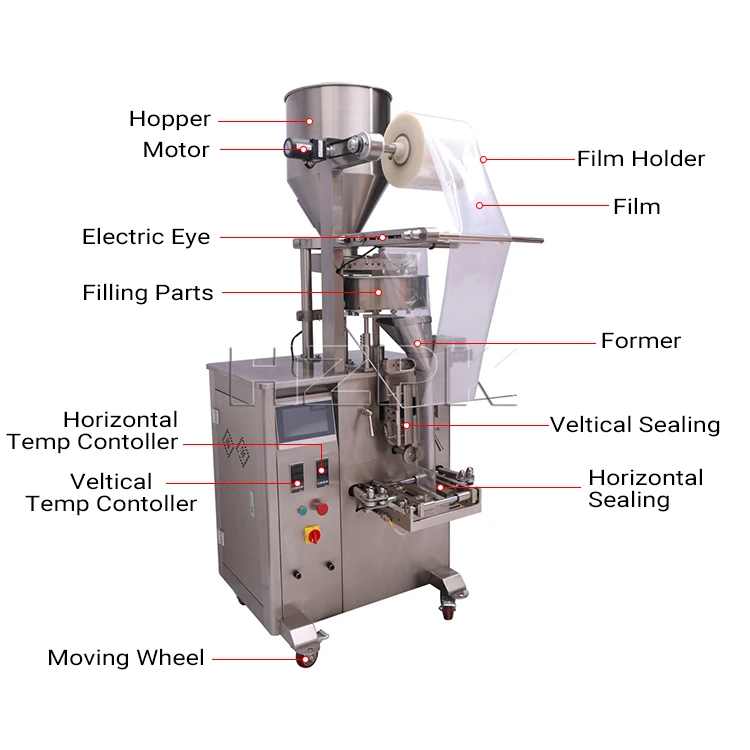How do Vertical Form Fill Seal Packaging Machines Work?

Vertical form fill seal packaging machines used for the efficient packaging of various products in vertical form-fill-seal sachets or bags., this article will introduce to you how do vertical form fill seal packaging machines work. .
Vertical form fill seal packaging machines working principle

Vertical form fill seal packaging machines work in a sequential process to form, fill, and seal bags or pouches. Here's a general overview of how they operate:

1.Film Unwinding: The packaging machine begins by unwinding a roll of packaging film or material. The film is typically made of plastic and comes in a continuous roll.

2.Forming the Bag: The film passes through a series of rollers and guides, which shape it into a tube. Vertical sealing bars create a longitudinal seal to form the back side of the bag, while a horizontal sealing bar creates the bottom seal.
3.Product Filling: The formed tube is then filled with the desired product. The product is usually measured and dispensed into the bag using a filling system, such as augers, volumetric cups, or weighers.
4.Bag Sealing: Once the bag is filled, the top section is sealed horizontally, creating a complete seal and separating the filled bag from the next bag. The sealing process can involve heat sealing, ultrasonic sealing, or other sealing methods, depending on the packaging materials used.

5.Bag Cutting and Discharge: After sealing, the bag is cut from the continuous roll using a cutting mechanism. The finished bag is then discharged from the machine, ready for further handling or packaging.

Throughout the process, the VFFS machine's controls and sensors ensure precise control of the film feed, product filling, sealing, and cutting operations. The machine can be programmed to adjust parameters such as bag length, filling volume, sealing temperature, and speed to accommodate different product and packaging requirements.
Vertical form fill seal packaging machines are versatile and can handle a wide range of products, including solid, semi-solid, or liquid products. They are commonly used in various industries, including food, pharmaceuticals, cosmetics, and hardware, for efficient and automated packaging operations.
Saturday January-27 2024 18:20:22
